| HD.412 | |
|---|---|
 | |
| Role | Racing floatplane |
| National origin | France |
| Manufacturer | Dewoitine |
| First flight | 1931 |
| Status | Prototype |
| Number built | 1 |
The Dewoitine HD.412 was a prototype French racing floatplane of the 1930s.
| HD.412 | |
|---|---|
 | |
| Role | Racing floatplane |
| National origin | France |
| Manufacturer | Dewoitine |
| First flight | 1931 |
| Status | Prototype |
| Number built | 1 |
The Dewoitine HD.412 was a prototype French racing floatplane of the 1930s.
The HD.412 was a low-wing monoplane racer of all-metal construction. It used floats for takeoff and landing on water.
Data from [1]
General characteristics
Performance
Related lists

The Nakajima A6M2-N was a single-crew floatplane based on the Mitsubishi A6M Zero Model 11. The Allied reporting name for the aircraft was Rufe.

The Nakajima E2N was a Japanese reconnaissance aircraft of the inter-war years. It was a single-engine, two-seat, sesquiplane seaplane with twin main floats.

The Breda A.4 was a biplane trainer produced in Italy in the mid-1920s. It was of conventional configuration with a two-bay unstaggered wing cellule and seating for the pilot and instructor in tandem open cockpits. Apart from civil use, the A.4 was also adopted by the Regia Aeronautica as a trainer. At least some examples were produced in floatplane configuration as the A.4idro.
The Hanriot HD.17 was a French trainer seaplane of the 1920s. It was essentially a floatplane version of the ubiquitous HD.14 with a revised tail and a more powerful engine. Over 50 examples were operated by the Aéronautique Maritime, of which seven were converted to landplanes. A small number of HD.17s were exported to Estonia and Latvia. Further development resulted in the HD.41H.

The Hanriot H.41 was a military trainer aircraft produced in France in the 1920s. It was a further development in the family of aircraft that had commenced with the HD.14 in 1920, and incorporated a number of design features that had been developed for other members of that family. Like those other aircraft, however, it was a conventional, two-bay biplane with unstaggered wings of equal span.

The Hansa Brandenburg W.27 and W.32 were prototype fighter floatplanes developed in parallel in Germany during World War I. They were developments of and intended replacements for the W.12 then in service and differed from each other principally in the choice of powerplant, the W.27 with a Benz Bz.IIIb and the W.32 with the same Mercedes D.III that the original W.12 used.

The Heinkel HE 12 was a pontoon-equipped mail plane built in Germany in 1929, designed to be launched by catapult from a liner at sea.

The Gloster VI was a racing seaplane developed as a contestant for the 1929 Schneider Trophy by the Gloster Aircraft Company.
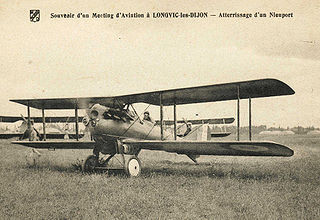
The Nieuport-Delage NiD.29 was a French single-seat biplane fighter designed and built by Nieuport-Delage for the French Air Force.
The Gloster II was a British racing floatplane of the 1920s. A single-engined biplane, two were built to compete in the 1924 Schneider Trophy air race. However the crash of the first prototype during testing meant that it could not be made ready for the race, which was postponed. The second aircraft was also lost in a crash.
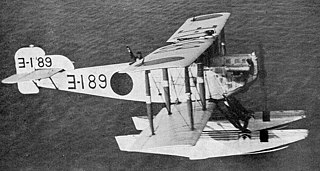
The Yokosuka E1Y was a Japanese floatplane of the 1920s. A single-engined biplane that was designed and developed by the Yokosuka Naval Air Technical Arsenal as a reconnaissance aircraft for the Imperial Japanese Navy, 320 were built as the Type 14 Reconnaissance Seaplane, entering service in 1925 and remained in operational service until 1932.
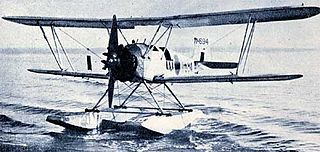
The Yokosuka K4Y was a Japanese floatplane trainer of the 1930s. A single engined two-seat biplane, 211 K4Ys were built between 1933 and 1940, serving as the Imperial Japanese Navy's basic floatplane trainer throughout the Second World War.

The Macchi M.53 was an Italian reconnaissance floatplane designed and built in the late 1920s by Macchi for the Regia Marina.
The Dewoitine HD.730 was a prototype French reconnaissance floatplane of the 1940s. It was a single-engined, low-wing monoplane that was designed as a catapult-launched reconnaissance aircraft to operate from warships of the French Navy. Two flew in 1940, and a third aircraft was built to a modified design in 1941, but no production followed.
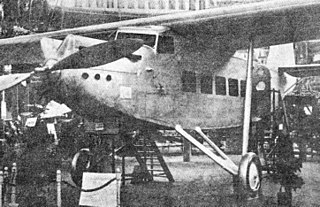
The Dewoitine D.30 was a ten-seat cantilever monoplane built in France in 1930. The D.30 was a single-engine aircraft but the second was completed as a trimotor and redesignated D.31.
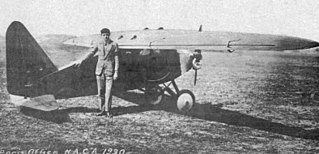
The Peyret-Mauboussin PM X, PM 4 or Mauboussin M.10 was a low power, single-seat, high wing cantilever monoplane. Only one was built but it set several records in the under 250 kg (550 lb) class both as a landplane and a floatplane.
The Kawanishi K8K was a Japanese floatplane trainer designed and built by the Kawanishi Aircraft Company for the Imperial Japanese Navy. It was selected for production, but only a small number were built before a change in the Japanese Navy's training needs led to production being stopped.
The Lorraine 12Rcr Radium was an inverted liquid-cooled 60º V-12 piston engine, designed specifically for use by French racing seaplanes competing in the Coupe d'Aviation Maritime Jacques Schneider air races in the early 1930s.
The Dewoitine HD.780 was a prototype French fighter-floatplane designed and built from 1938–40. It was a single-seat, single-engined aircraft based on the Dewoitine D.520 land-based fighter. A single example was built but was abandoned unflown, and was scrapped.